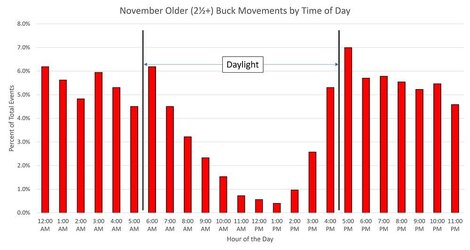I'm late to the conversation...this thread covers multiple topics that are interesting...on the private land we hunt and manage we absolutely have sanctuary or refuge areas...farms around us are hunted but not over pressured....but we still allow deer a place to go without being pressured...basically there are three large blocks we dont put pressure on...but we hunt travel corridors in-between these areas and we do everything possible to keep pressure to a minimum.
I'm late too. We are limited to sanctuary areas by timber cutting schedule on our place, therefore some of our sanctuaries may be 100 acres or more of 10 year old planted pines. I refer these areas as "deer factories". No doubt some deer live their life out inside these areas, venturing out only to feed or during rut. But wherever those areas end creates a lot of "edge" that makes a great place to catch a mature buck anytime of day during rut. Outside of rut, you'll never see them. We try to place as many plots as they'll allow at these edges, which takes years of planning and work, then it'll be 5-6 years before those plots are worth hunting. Think new cutover, push plots before pines are planted, plant for several years before hunting. But after established, we have great places for 10-15 years to hunt food sources adjacent to the deer factories, and kill mature deer any hour of day during rut.
We too do absolutely we can to minimize pressure on our 3500 acres. Only 15 members, only traffic past camp during hunting season is hunting (no riding around, scouting, moving stands, no cams on plots, mowed trails to shooting house to allow stealthy approach, etc). Cams are only checked if you hunting where your cam is at.
Also...we have killed mature bucks before which we dont have pics of...but the majority of mature bucks we kill we have many, many pics of....also, for some bucks we will get summer velvet pics, hard horn pics and occasionally pick up their sheds..."home towners" we call them...and while some bucks absolutely do shift...all bucks dont travel for miles....especially when they have everything they need in one location with minimal pressure...
While we occasionally kill a mature buck that is a visitor, the vast majority we know very well. Very common for one to be killed where we had pics in summer. Many of our visitors come from across the road where we join a 6500 club, and I'm sure that they kill a few that stay on us most of year too.
I only run 3 cell cams and they are all on big traditional scrapes scattered fairly equal across property and never go to them unless there's an issue with batteries or card. I primarily use them to tell me about deer "movement". Probably 95%+ of daytime pics are does and junior bucks even during rut. If I'm getting pics at noon on the north end of property, chances are very good that I'm getting pics at the south end as well which is 5 miles away. Even if it's just does & young bucks, I want to be in woods
when that
movement is
occuring. I do not get many mid day pics of mature deer but feel that know that cam is there and avoid getting pic taken. However if does are moving at mid day during rut, I want to be hunting then. I may even sleep in on those mornings and not get into stand until 8-9:00.
I'm not a big plot hunter so my cell cam locations are all at major terrain and/or timber type intersections such as hardwoods/sanctuary area/thinned pines/steep hollows, i.e. type of areas I like to hunt for mature bucks. I really try to setup on at least transition of 3 different types of terrain or cover.
One anomaly we've noticed the past few years is big mature bucks in thinned pines. 7- 8 years ago timber company started thinning and 5th rowing our pines as opposed to clear-cutting. These areas have become hotspots for cruising & chasing all hours of the day. Often they will be in between of two sanctuaries or a sanctuary on one side & hardwood hollow on other. We use tripod stands in these spots and key is to be able to see a lot of area. During rut, these are spots that you want to pack a lunch and set all day. Our best buck ever was killed cruising in one of these spots late morning & scored 168 with a broke left G2. I saw him the day before around 2:00 scent checking a plot 75 yards off of it but why I didn't kill him is another thread topic



